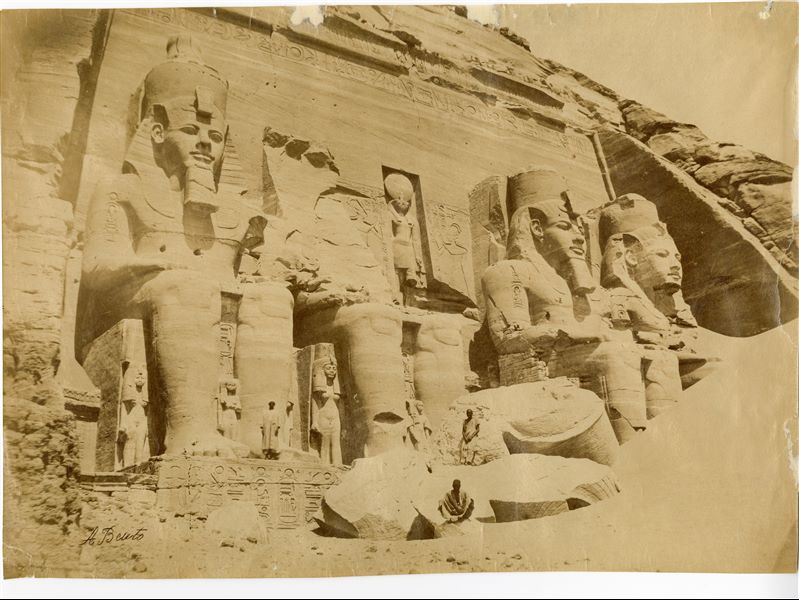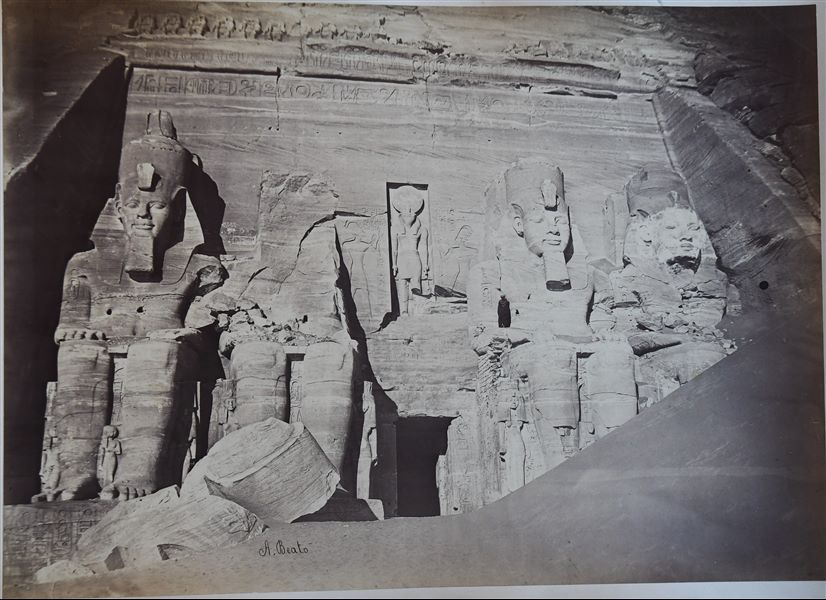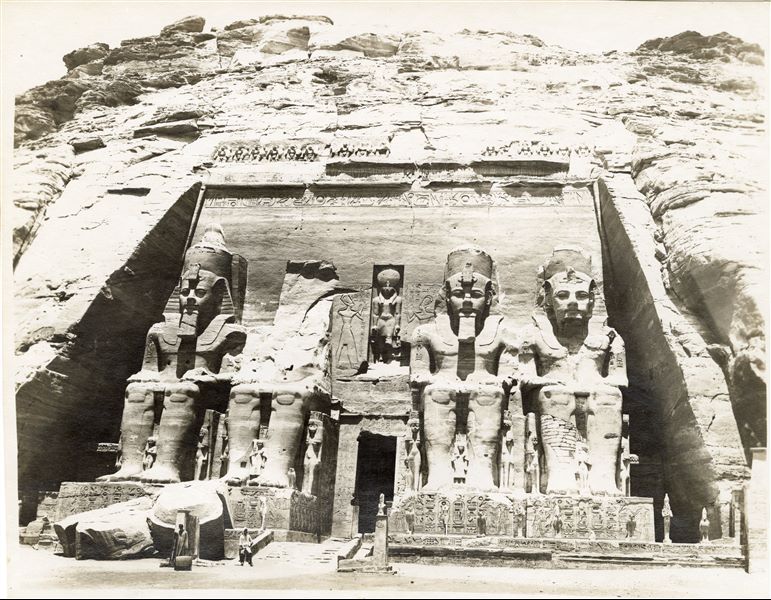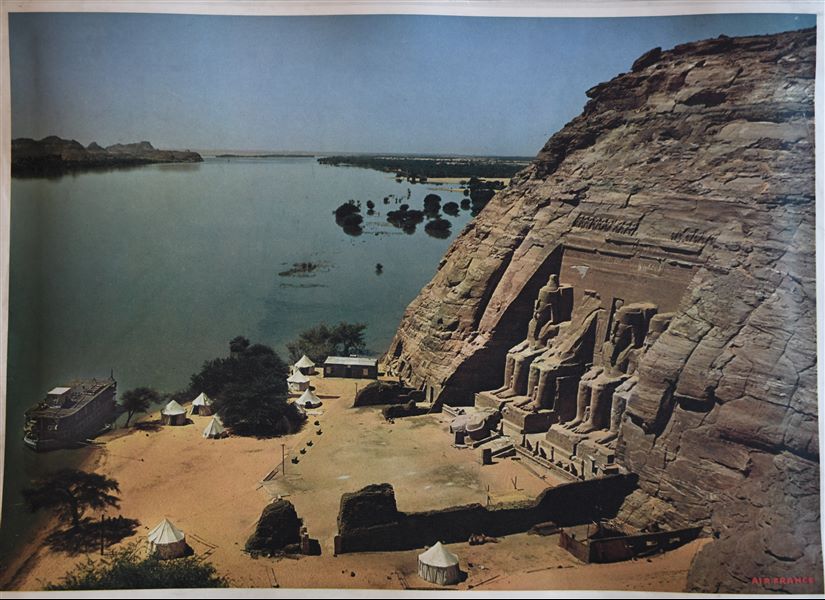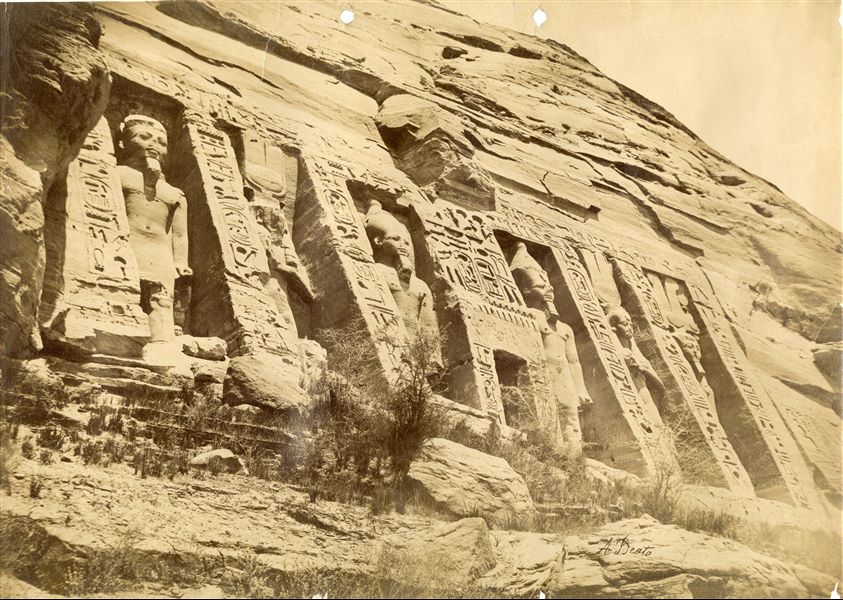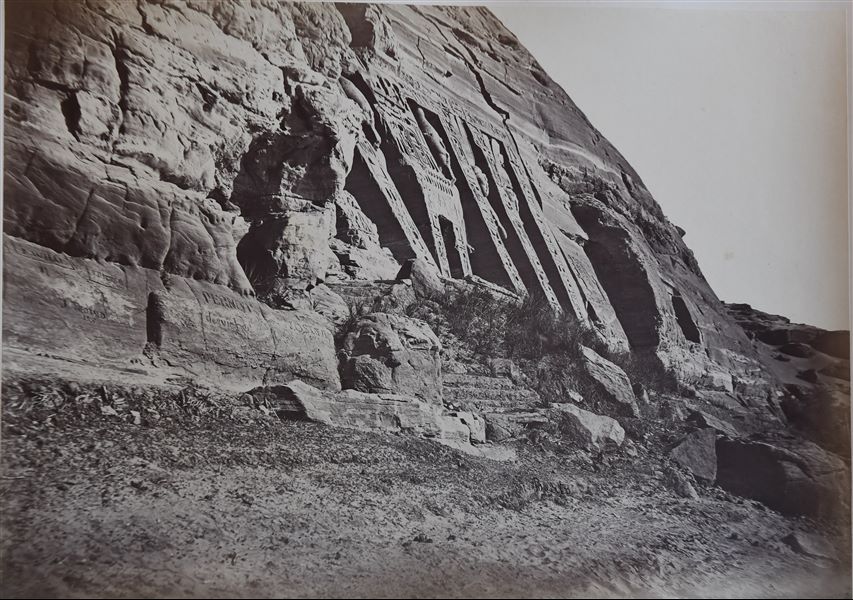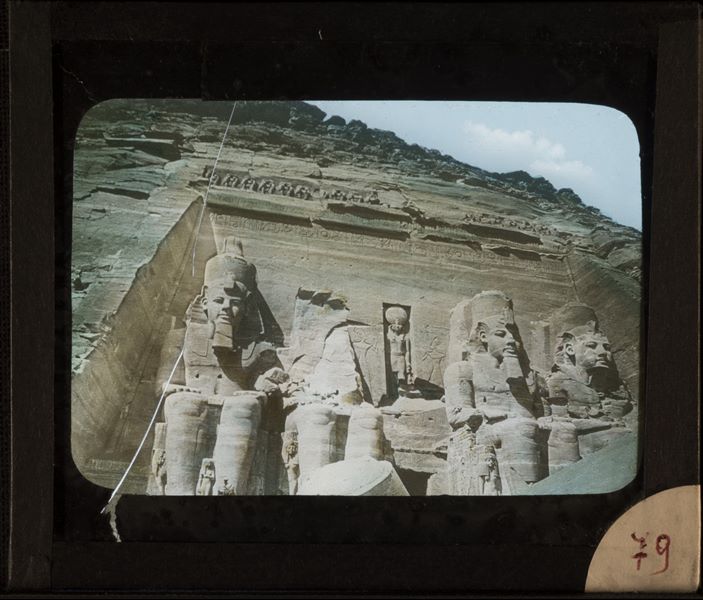View of the monumental entrance to the Great Temple of Abu Simbel, built by Pharaoh Ramesses II. On the right is a mound of sand, partially covering the fourth colossal statue carved into the rock. Some inhabitants of the area are posing for the picture. In the 1960s, the temple became the symbol of the rescue campaign of the Nubian temples, threatened by the rising waters of Lake Nasser following the construction of the Aswan Dam. The two temples of Abu Simbel were in fact cut in to blocks and reassembled on a nearby hill. The author's signature is at the bottom left.
The photograph shows the exterior of the Great Temple of Abu Simbel, where one of the four colossal statues, together with the collapsed head of a second statue, are still partially covered by sand. The author's signature is clearly visible at the bottom.
The image shows the frontal view of the façade of the Great Temple of Abu Simbel built by Ramesses II, cleared of the sand.
Modern, colour image of the Great Temple of Abu Simbel, shortly before work began on moving it to a nearby higher ground.
View of the façade of the Small Temple of Abu Simbel, with the colossal statues depicting the deified Pharaoh Ramesses II and Queen Nefertari. In the 1960s this temple, together with the Great Temple, were moved and placed on higher ground, as they were threatened by the rising waters of Lake Nasser following the construction of the Aswan Dam. Below, the signature of the author.
The photograph shows a view from below of the Small Temple of Abu Simbel. The colossal statues on the façade, portraying Ramesses II and his wife Nefertari can be seen. The rocky walls next to the temple are engraved with graffiti. The author's signature is at the bottom.
19th century colour photograph of the Temple of Ramesses II at Abu Simbel.
